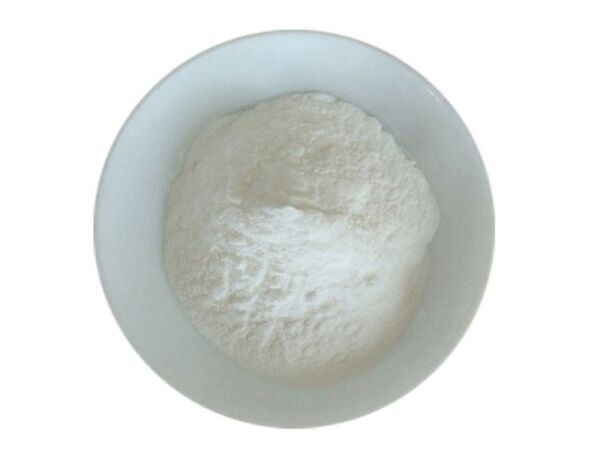Table of Contents
What is Organic Allulose Sweetener?
Organic Allulose Sweetener is a naturally occurring rare sugar that provides the sweetness of traditional sugar without the calories. Sourced from certified organic ingredients, it offers a clean-label alternative for health-conscious consumers and manufacturers. This sweetener is ideal for reducing sugar in various food and beverage applications while maintaining excellent taste and functionality.
Production Process:
- Source Selection: Extracted from certified organic raw materials such as corn or fruits.
- Enzymatic Conversion: Natural enzymes are used to convert fructose into allulose.
- Purification: The solution is filtered and refined to remove impurities.
- Crystallization: The purified solution is crystallized to form a fine powder.
- Quality Assurance: Each batch undergoes stringent testing to ensure purity and compliance with organic standards.
Key Features:
- 100% Organic Certified: USDA and EU Organic Certified, ensuring premium quality with no synthetic chemicals or GMOs.
- Low-Calorie Sweetener: Contains only 0.2 kcal per gram, making it nearly calorie-free.
- Sugar-Like Sweetness: Provides 70% of the sweetness of sucrose with no bitter aftertaste.
- Low Glycemic Impact: Does not spike blood sugar levels, suitable for diabetics.
- Clean Label Ingredient: Perfect for natural and health-conscious product formulations.
- Versatile Usage: Functions like sugar in baking, beverages, and cooking.
- Non-GMO & Vegan: Free from animal products, allergens, and artificial additives.
Specifications
| Parameter | Specification |
|---|---|
| Appearance | White crystalline powder |
| Sweetness | About 70% as sweet as sucrose |
| Solubility | Soluble in water |
| pH | 6.0 – 7.0 |
| Total Plate Count | ≤ 1,000 cfu/g |
| Yeast & Mold | ≤ 100 cfu/g |
| E. coli | Negative |
| Salmonella | Negative |
| Heavy Metals | |
| Mercury (Hg) | ≤ 0.01 mg/kg |
| Lead (Pb) | ≤ 0.10 mg/kg |
| Cadmium (Cd) | ≤ 0.05 mg/kg |
| Arsenic (As) | ≤ 0.03 mg/kg |
| Chromium (Cr) | ≤ 0.30 mg/kg |
| Copper (Cu) | ≤ 1.50 mg/kg |
Health Benefits:
- Low-Calorie Sweetener: Allulose offers a sweet taste similar to sugar but with 90% fewer calories, making it an excellent option for those looking to reduce their calorie intake and manage their weight.
- Supports Healthy Blood Sugar Levels: Because it does not significantly impact blood glucose or insulin levels, allulose is a safe alternative for individuals with diabetes or those trying to maintain balanced blood sugar levels.
- Gut Health Support: Unlike many sugar alcohols, organic allulose is easily tolerated by most people and has minimal digestive discomfort, making it suitable for those with sensitive stomachs.
- Improves Metabolic Health: Studies suggest that allulose may help with fat metabolism and support the body’s ability to burn fat, making it a beneficial ingredient for weight management and metabolic health.
- Keto & Low-Carb Friendly: Allulose is ideal for ketogenic and low-carb diets, as it does not contribute to net carbs or spike insulin, making it an excellent choice for those on carb-restricted plans.
- No Aftertaste: Unlike other sugar alternatives such as stevia or erythritol, allulose does not have any bitter or off-putting aftertaste, making it a preferred option for a clean, natural sweetness.
Applications:
- Beverages: Ideal for sugar-free or low-calorie beverages, including soft drinks, teas, coffee, smoothies, and energy drinks.
- Baked Goods: Can be used as a sugar replacement in cookies, cakes, muffins, and bread, providing sweetness without the calories or glycemic impact of traditional sugar.
- Dietary Supplements: Perfect for inclusion in powdered drink mixes, protein powders, and meal replacement shakes for natural sweetness without the extra calories.
- Snacks & Sauces: Adds sweetness to energy bars, granola, sauces, dressings, and other savory-sweet foods without adding calories or impacting blood sugar.
- Frozen Desserts: Great for use in sugar-free ice creams, sorbets, and frozen yogurt, where it adds sweetness without freezing into large ice crystals like sugar.
Quality Assurance:
Our Organic Allulose Sweetener is produced with the highest standards of quality control to ensure that it meets USDA and EU organic certification requirements. It is tested for purity and potency, ensuring that it is free from contaminants such as heavy metals, pesticides, and GMOs. Our allulose is manufactured without artificial additives or preservatives, guaranteeing a clean and natural product.
Why Choose Our Organic Allulose Sweetener?
Our Organic Allulose Sweetener offers a clean, low-calorie, and naturally sourced alternative to sugar. It provides the sweetness you crave without the calories or glycemic impact, making it an ideal choice for those managing their weight, blood sugar, or following low-carb diets. Whether you’re creating sugar-free beverages, baked goods, or dietary supplements, our Organic Allulose Powder is the perfect solution for a healthier, sugar-free lifestyle.
